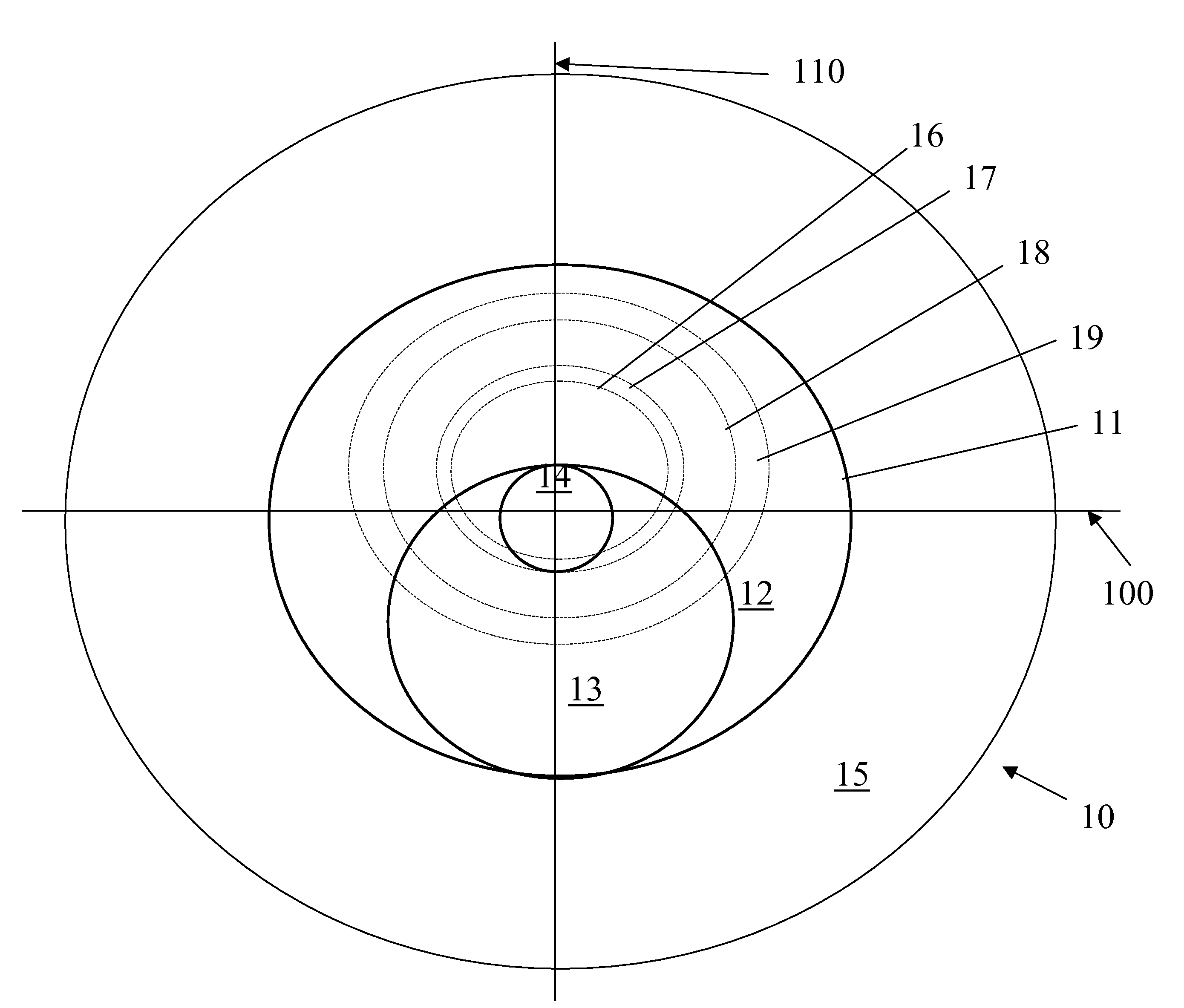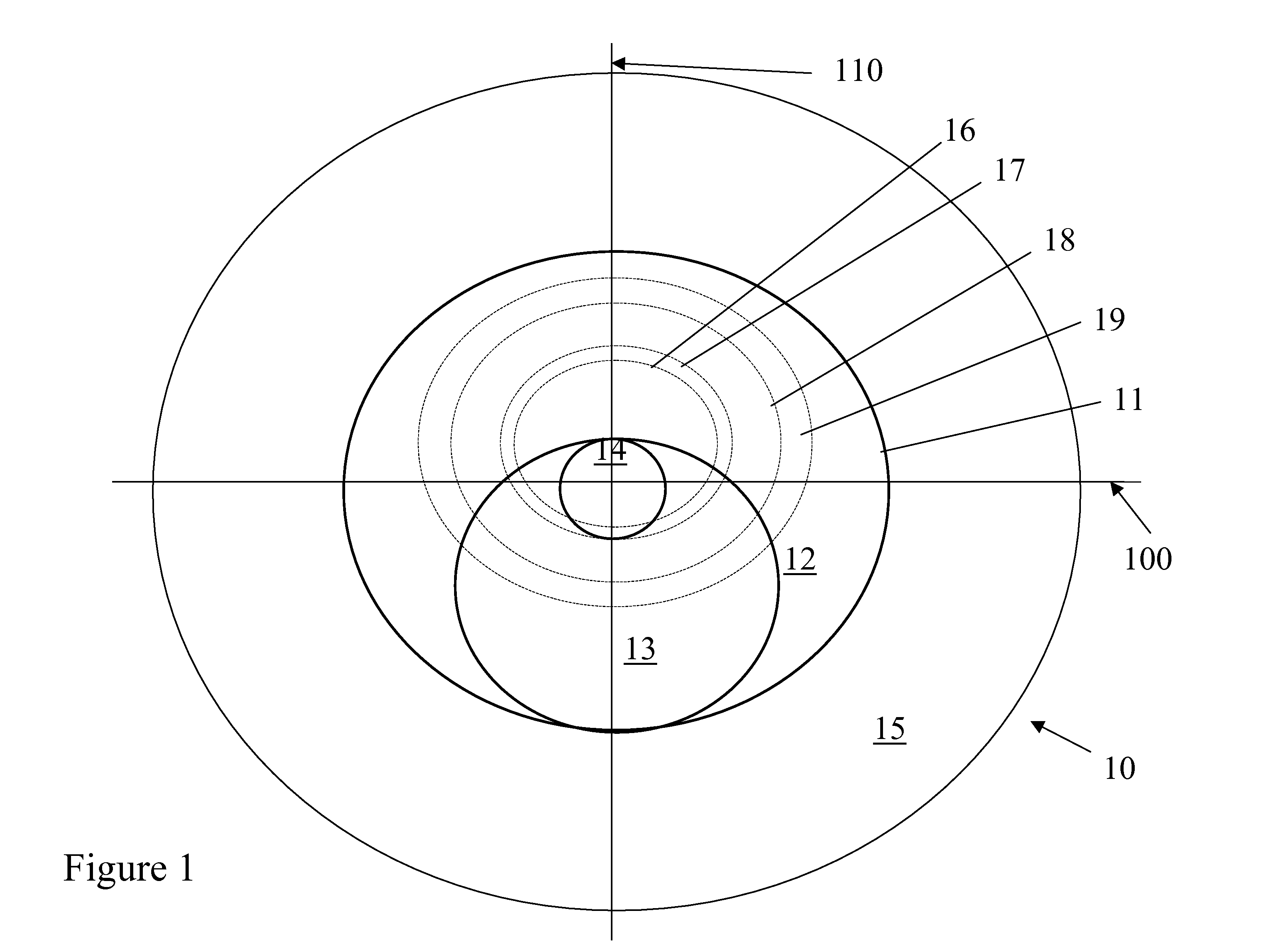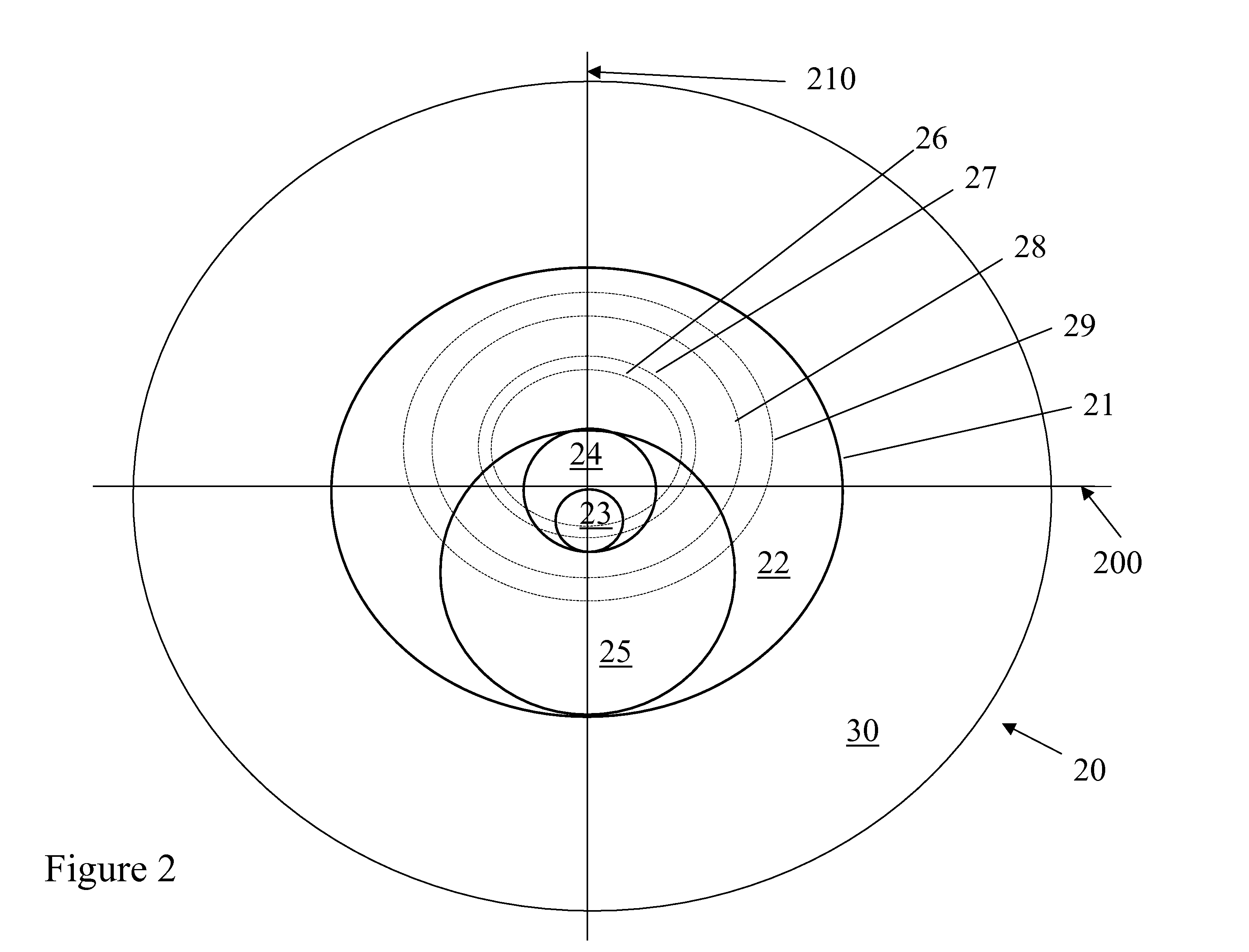Translating multifocal ophthalmic lenses
a technology of ophthalmology and multifocal lens, which is applied in the field of ophthalmology, can solve the problems of large vertical distance that the lens must move, the difference in magnification between the near and the distance vision zone, and the eye is less able to accommodate or bend the natural lens,
- Summary
- Abstract
- Description
- Claims
- Application Information
AI Technical Summary
Benefits of technology
Problems solved by technology
Method used
Image
Examples
example 1
[0029]A lens in accordance with FIG. 1 is provided. Referring to FIG. 1, optic zone 11 has an outer distance vision zone 12 with a diameter of 8 mm and an inner distance vision zone 14 with a diameter of 1.60 mm. Near vision zone 13 is 1.60 mm in diameter. Dotted lines 16, 17, 18 and 19 represent pupils of diameters of 3.0, 3.5, 5.0 and 6.0 mm, respectively.
[0030]The distance percentage within the pupil area was calculated for each pupil size and at pupil locations of y=0 and y=−1.5 mm from a distance reference point that is located at y=0.8 mm, meaning a point along the 90-270 degree meridian that is 0.8 mm superiorly from the 0-180 degree meridian. The results in Table 1 demonstrate that the lens design produces a pupil independent distance percentage for both y=0 and y=−1.5 mm meaning that, at y=0, the distance percentage is >50 &, at y=−1.5, is <50%, and the percentages are relatively constant with pupil size.
[0031]
TABLE 1Example 13.0 mm3.5 mm5.0 mm6.0 mmAverage 0.0 mm90%80%73%...
example 2
[0032]A lens in accordance with FIG. 2 is provided. Referring to FIG. 2, optic zone 21 has an outer distance vision zone 22 with a diameter of 8 mm and an inner distance vision zone 24 with a diameter 2.10 mm. An inner near vision zone 23 is of a diameter of 1.04 mm and an outer near vision zone 25 is of a diameter of 4.74 mm. Dotted lines 26, 27, 28 and 29 represent pupils of diameters of 3.0, 3.5, 5.0 and 6.0 mm, respectively.
[0033]The pupil sizes are analyzed for the percentage of distance power within the pupil area at y=0 and y=−1.5 for the distance reference point of y=0.8 mm. The results in Table 2 demonstrate that the lens design produces a pupil independent distance to near ratio for y=0 and y=1.5.
[0034]
TABLE 2Example 23.0 mm3.5 mm5.0 mm6.0 mmAverage 0.0 mm80%75%71%67%73%−1.5 mm25%25%29%38%30%
PUM
 Login to View More
Login to View More Abstract
Description
Claims
Application Information
 Login to View More
Login to View More - R&D
- Intellectual Property
- Life Sciences
- Materials
- Tech Scout
- Unparalleled Data Quality
- Higher Quality Content
- 60% Fewer Hallucinations
Browse by: Latest US Patents, China's latest patents, Technical Efficacy Thesaurus, Application Domain, Technology Topic, Popular Technical Reports.
© 2025 PatSnap. All rights reserved.Legal|Privacy policy|Modern Slavery Act Transparency Statement|Sitemap|About US| Contact US: help@patsnap.com



